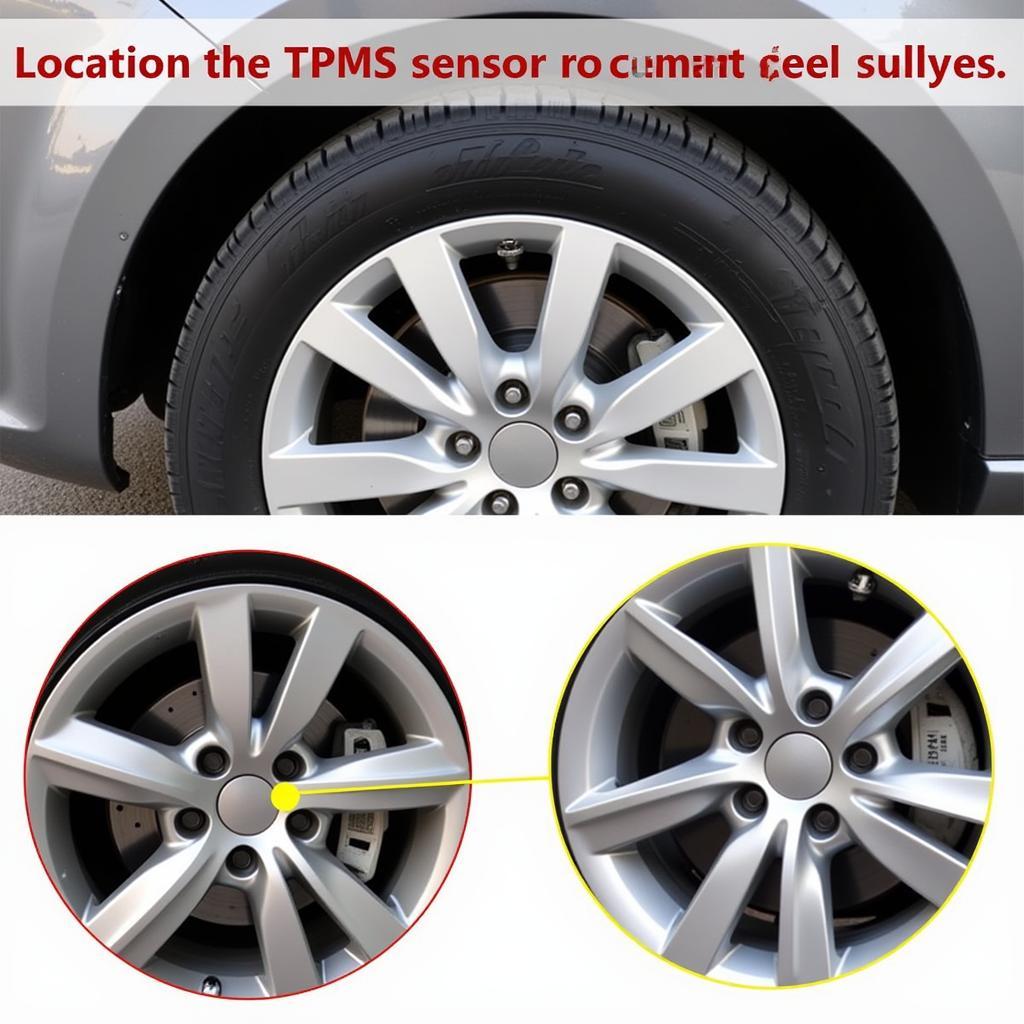The dreaded tyre pressure warning light. It can illuminate your Seat Alhambra’s dashboard for a myriad of reasons, leaving you wondering whether it’s a minor annoyance or a serious safety concern. This comprehensive guide delves into the common causes of Seat Alhambra tyre pressure warnings and equips you with the knowledge to address them effectively.
Understanding Tyre Pressure Monitoring Systems (TPMS)
Before we delve into the specifics of the Seat Alhambra, it’s crucial to understand how Tyre Pressure Monitoring Systems (TPMS) work. These sophisticated systems, mandatory in many modern vehicles, continuously monitor tyre pressure and alert the driver to any discrepancies. TPMS generally fall into two categories:
- Direct TPMS: These systems utilize pressure sensors located within each wheel. These sensors directly measure tyre pressure and relay information to the vehicle’s onboard computer.
- Indirect TPMS: Instead of directly measuring pressure, indirect TPMS utilize the vehicle’s Anti-lock Braking System (ABS) wheel speed sensors. By monitoring the rotational speed of each wheel, the system can detect variations that suggest underinflation.
The Seat Alhambra typically uses a direct TPMS. This system offers greater accuracy and can often provide readings for each individual tyre.
 Seat Alhambra TPMS Sensor
Seat Alhambra TPMS Sensor
Common Causes of Seat Alhambra Tyre Pressure Warnings
A glowing tyre pressure warning light on your Seat Alhambra dashboard can stem from several factors. Let’s explore the most common culprits:
1. Underinflated Tyres
The most common reason for the tyre pressure warning light is straightforward – one or more of your tyres are underinflated. Underinflation can occur gradually due to slow leaks or suddenly due to punctures.
Solution: Check your tyre pressure using a reliable gauge. Refer to the sticker on your driver’s side door jamb or your owner’s manual for the recommended pressure for your Seat Alhambra model. Inflate your tyres to the correct pressure and ensure you check the spare tyre as well.
2. Faulty TPMS Sensor
Like any electronic component, TPMS sensors can malfunction. Battery depletion, sensor damage, or corrosion can disrupt the sensor’s ability to transmit accurate pressure readings.
Solution: A qualified mechanic can diagnose a faulty TPMS sensor using a diagnostic tool. If a sensor is faulty, it will need to be replaced.
 Seat Alhambra TPMS Diagnostic Scan
Seat Alhambra TPMS Diagnostic Scan
3. TPMS Sensor Needs Resetting
After inflating your tyres or replacing a TPMS sensor, it’s essential to reset the TPMS system. This procedure allows the system to recognize the new pressure readings and clear the warning light.
Solution: The reset procedure varies between Seat Alhambra models. Consult your owner’s manual for the specific steps to reset your vehicle’s TPMS. Typically, it involves a combination of button presses or navigating through the vehicle’s infotainment system.
4. Extreme Temperature Fluctuations
Extreme temperature changes can affect tyre pressure. As temperatures drop, so does the air pressure in your tyres, potentially triggering the TPMS warning light.
Solution: Keep a close eye on your tyre pressure during periods of significant temperature fluctuations. Adjust the pressure accordingly to match the recommended levels for your Seat Alhambra.
5. TPMS Control Unit Malfunction
While less common, the TPMS control unit, responsible for receiving and processing data from the sensors, can malfunction. This scenario necessitates professional attention.
Solution: A qualified mechanic can diagnose and address TPMS control unit issues. If faulty, the unit may require replacement or reprogramming.
Seat Alhambra Tyre Pressure Warning Light : Seeking Professional Help
While some TPMS issues are resolvable with basic checks and adjustments, seeking professional help is advisable if:
- You’re uncomfortable troubleshooting the issue yourself.
- You’ve addressed potential causes, but the warning light persists.
- You suspect a more complex issue, such as a faulty TPMS control unit.
Modern vehicles like the Seat Alhambra often require specialized diagnostic equipment and expertise to address TPMS issues effectively.
Conclusion
The tyre pressure warning light on your Seat Alhambra shouldn’t be ignored. Understanding the potential causes and solutions empowers you to address the issue promptly and ensure a safe and comfortable driving experience. Regular tyre pressure checks, awareness of the TPMS system, and seeking professional help when needed contribute to optimal vehicle performance and safety on the road.
